Results 9,921 to 9,930 of 12094
Thread: Anandtech News
-
10-03-19, 07:36 AM #9921
Anandtech: WD My Passport 5TB DAS Review: Compact and Consistent Capacity Champ Gets
Cost-conscious consumers with bulk storage requirements need to rely on hard drives. On the portable front, HDD vendors have been using 2.5" drives in external bus-powered enclosures to serve the market. Seagate was the first vendor to put out a 5TB portable bus-powered drive, and Western Digital recently introduced a slew of 5TB models of their own. Similar to Seagate, Western Digital has also adopted SMR platters for their portable hard drives over the last couple of generations. Today, we take a look at features and characteristics of the WD 5TB My Passport Portable External Hard Drive.
More...
-
10-03-19, 10:12 AM #9922
Anandtech: Team Group Unveils MP33 SSDs: Entry-Level PCIe Drives
Team Group has introduced its new family of NVMe SSDs aimed at the budget PC market. The new MP33 drives use controllers from Silicon Motion and Phison and will be available in 128 GB, 256 GB, 512 GB, and 1 TB configuration.
Team Group’s MP33 SSDs are based on Silicon Motion’s SM2263XT or Phison PS5013-E13T controller as well as 3D TLC NAND memory from Intel or Toshiba. Using different controllers and memory from different suppliers within one family of drives enables the manufacturer to offer the most competitive prices for all configurations, however the actual performance is likely to differ, making this a difficult product to qualify as users will never know which configuration they are buying.
The MP33 drives from Team Group come in the M.2-2280 form-factor and feature a PCIe 3.0 x4 interface. When it comes to performance, the SSDs feature up to 1800 MB/s sequential read speed, up to 1500 MB/s sequential write speed, up to 220K random read IOPS, as well as up to 200K random write IOPS.
Since the MP33 SSDs do not feature any heat spreader, they can be installed inside desktops and laptops. Team Group’s MP33 SSDs will be available in the near future from the company’s retail partners. Pricing will depend on exact configuration, but we expect the drives to be priced very competitively.Team Group MP33 SSD Specifications Capacity 128 GB 256 GB 512 GB 1 TB Model Number TM8FP6128G0C101 TM8FP6256G0C101 TM8FP6512G0C101 TM8FP6001T0C101 Controller Silicon Motion SM2263XT
Phison PS5013-E13TNAND Flash 3D TLC NAND from Intel or Toshiba Form-Factor, Interface M.2-2280, PCIe 3.0 x4, NVMe 1.3 Sequential Read 1500 MB/s 1600 MB/s 1700 MB/s 1800 MB/s Sequential Write 500 MB/s 1000 MB/s 1400 MB/s 1500 MB/s Random Read IOPS 90K 160K 220K 220K Random Write IOPS 100K 200K 200K 200K Pseudo-SLC Caching Supported DRAM Buffer No TCG Opal Encryption ? Power Management ? Warranty ? years MTBF ? TBW 100 TB 200 TB 400 TB 600 TB Additional Information Link MSRP ? ? ? ?
Related Reading- Dressed to Impress: Team Group’s T-Force Delta Max RGB SATA SSD
- Team Group’s T-Force Cardea Liquid: A Liquid-Cooled M.2 SSD
- The Team Group Delta RGB SSD Review: Lite Performance, Light Drive
Source: Team Group
More...
-
10-03-19, 10:12 AM #9923
Anandtech: HP’s 2019 Spectre 13 X360 Launched: Ice Lake, OLED, 22 Hours
HP has introduced a new version of its 13-inch Spectre x360 convertible laptop. The Project Athena-class hybrid notebook is smaller than its predecessor yet features higher performance, improved responsiveness, an optional OLED monitor, improved security, and a battery life of up to 22 hours.
The 2019 HP Spectre 13 x360 comes in an all-new CNC-machined aluminum chassis with Natural Silver, Poseidon Blue or Nightfall Black finish with ultra-thin display bezels that enabled HP to make the convertible laptop smaller while preserving a 13.3-inch display size. The latest Spectre 13 x360 convertible is 17 mm (0.67 inches) thick and weighs 1.30 kilograms (2.88 lbs), which means that it is 2.5 mm thicker than is predecessor, but has the same weight. Meanwhile, design of the laptop is generally similar to 2018 model as it features diamond-shape edges as well as an angled USB Type-C connector located in the faceted edge on the right.
Besides aesthetics, there are other reasons why HP had to redesign its 2019 HP Spectre 13 x360. The new hybrid notebook is based on Intel’s 10th Gen Core Ice Lake processor with up to four cores as well as Intel Iris Plus graphics. The new CPU uses a smaller motherboard, but benefits greatly from a good cooling system, so HP had to enhance its thermal design too. In particular, the new cooler has two fans, three heat pipes, larger air inlets and outlets, as well as graphite insulation. Furthermore, HP enables customers to use the PC in Performance, Comfort, and Quiet modes so that to balance performance, fan noise, and temperature according to needs at every given time. It is not stated if this means that HP has increased the power mode of the CPU, which we see on some other high performance Ice Lake designs.
Depending on exact SKU, the CPU inside the HP Spectre 13 x360 is accompanied by 8 or 16 GB of LPDDR4X memory onboard as well as a 512 GB or 1 TB Intel SSD with 32 GB of Intel Optane Memory caching drive. Since we are talking about a high-end machine, its connectivity are top-notch as well: the machine has Intel’s Wi-Fi 6 AX201 + Bluetooth 5 adapter as well as an optional 4G/LTE Gigabit modem that can both use the laptop’s 4x4 antennas simultaneously; two Thunderbolt 3 ports, a ISB 3.1 Gen 1 Type-A connector, two display outputs (HDMI 2.0, DisplayPort 1.4), a microSD card reader, and a 3.5-mm headset port. On the multimedia side of things the computer has a Windows Hello-enabled webcam, stereo speakers co-designed with Bang & Olufsen, and a microphone array. To ensure maximum security and privacy, the notebook not only has a webcam kill switch, but a dedicated microphone mute button.
Traditionally, HP plans to offer multiple 13.3-inch touch-enabled display options with its new Spectre 13 x360. The top-of-the-range models will come with a 4K Ultra-HD OLED panel that covers 100% of the DCI-P3 color gamut. Cheaper SKUs will use a Full-HD IPS panel and a power consumption of 1 W, which will allow HP to hit up to a 22 hour battery runtime. In addition, there will be version of the hybrid laptop with HP’s SureView privacy screen technology as well as an anti-reflection glass cover.
Talking about battery life, it should be noted that all 2019 Spectre 13 x360 machines will come with a 60 Wh Li-ion polymer battery and a 65 W power brick. Therefore, their battery life will depend mostly on internal and display configurations rather than on the battery capacity.
HP’s latest Spectre 13 x360 convertible notebooks will be available this month starting at $1,099.99 for the cheapest model with a Full-HD LCD. Advanced SKUs with an OLED monitor will cost starting from $1,499.99.General Specifications of the HP Spectre 13 x360 (2019) General specifications, actual products will offer different configs LCD Diagonal 13.3" Resolution | Brightness | Features 3840×2160 OLED
1920×1080
1920×1080 with SureView
Optional anti-reflection glassColor Gamut 100% DCI-P3 (in case of OLED) Touch Support Yes Protective Glass Corning Gorilla Glass NBT CPU Up to Intel Core i7-1065G7 Graphics Intel Iris Plus Graphics RAM 8 GB or 16 GB LPDDR4-3200 (onboard) Storage 256GB, 512 GB or 1 TB NVMe SSD
Optional Intel Optane Memory 32 GB caching SSDWireless: Wi-Fi, Bluetooth, LTE, NFC, and GPS options Intel Wi-Fi 6 AX201 + Bluetooth 5
Gigabit 4G/LTE modem on select SKUsUSB Type-A 1 × USB 3.1 Gen 1 Type-C 2 × TB3/USB 3.1 Gen 2Thunderbolt 2 × TB 3 (for data, DP displays, power) Card Reader microSD Cameras Front HP TrueVision HD IR Webcam with integrated dual array digital microphones, and an electrical kill switch Fingerprint Sensor Yes Other I/O Microphone, two stereo speakers, audio jack Other Sensors Accelerometer, gyroscope, magnetometer, Hall effect sensor, ambient light sensor Battery 60 Wh Dimensions Width 30.68 cm | 12.08 inches Depth 19.45 cm | 7.66 inches Thickness 1.7 cm | 0.67 inches Weight 1.30 kilograms | 2.88 pounds Launch Price Starting at $1,099
Related Reading- HP’s Unveils Elite Dragonfly Laptop: 13.3-Inch Convertible With a 24.5 Hour Battery Life
- HP Launches Ultra-Thin HP Spectre 13 x360: Quad-Core i7, Gigabit LTE, 22.5 Hr Battery Life
- HP at CES 2019: HP Spectre x360 15 Gets AMOLED Display
- HP’s EliteBook x360 1030 G4 Gets Whiskey Lake, 1000 nits LCD, Wi-Fi 6
Source: HP
More...
-
10-03-19, 04:29 PM #9924
Anandtech: IDC PC Monitor Trends: IPS and 21.5-Inch Most Popular, Curved Displays Get
Sales of large displays and/or gaming displays have been increasing in the past few years, but recently monitor manufacturers have also rolled-out oversized displays and curved LCDs for their clientele. But while the market install base of such advanced displays is growing, the most popular monitors still measure 21.5 inches, according to analysts from IDC. Meanwhile, IPS LCD panels now dominate the market, leaving TN and VA behind.
IDC market researchers expect 122 million PC monitors to ship in 2019, down 1% from the previous year. In Q2, sales of PC displays totaled around 30 million units, driven by migration of commercial desktops to Windows 10 yet offset by manufacturers’ focus on premium gaming and curved LCDs and their emphasis shift away from volumes to focus on higher ASP growth.
Based on data from IDC, displays featuring a 21.5-inch diagonal are still the most popular, and analysts expect that populatity to stick until 2023, where it sees the 23.8-inch market becoming top. Whether this popularity stems from the screen size or the price of the display is another matter entirely. As larger displays are manufactured in larger quantities, in a commodity market, eventually pricing of the larger displays is reduced.
Nonetheless, sales of curved monitors (which mostly belong to the premium segment) grew 44.7% year-over-year in the second quarter. It is believed (by some other analysts) that half of all curved displays are designed for gamers, which means that these displays offer advanced features and might command a significant premium because of that market.
It is also noteworthy that IDC reports that IPS-based LCDs now account for about 50% of the market, trailed by TN and VA panels, which inidicates demand for higher-quality displays is growing. The one market that TN panels still held was for fast refresh rates, but so-called ‘Fast IPS’ panels have entered the market which have refresh rates of up to 240 Hz while offering great viewing angles and saturated colors, so it remains to be seen how the panel market develops in the coming years.
As far as monitor manufacturers are concerned, Dell retained its No. 1 position in Q2 with a 21.4% market share followed by HP with a 15.2% share. TPV, the only Top 5 display maker that managed to significantly boost its shipments in the second quarter, commanded 14.4% of the market trailed by Lenovo with a 10% share as well as LG with a 8.2% share.
This information is derived from recent IDC press releases. IDC offers the full report.Top 5 PC Monitor Makers
Q2 2019, IDCQ2 2019 Q2 2018 Q2 2018->
Q2 2019Sales Share Sales Share Growth Dell 6.4 million 21.4% 6.4 million 20.7% 1.1% HP 4.6 million 15.2% 4.7 million 15.2% -1.9% TPV 4.3 million 14.4% 4.0 million 13.0% 8.9% Lenovo 3.0 million 10.0% 3.2 million 10.4% -5.8% LG 2.5 million 8.2% 2.5 million 8.3% -3.3% Others 9.2 million 30.7% 10.0 million 32.4% -7.3% Total 30.1 million 100% 30.7 million 100.0% -2.2%
Related Reading- Sales of High Refresh Gaming Displays Skyrocketing, Curved Gaming LCDs Prevail
- HP Launches Their S430c 43.4-Inch Ultrawide Curved Display
- Need for Speed: The LG UltraGear (27GN750) 240 Hz IPS Monitor with G-Sync
- Lenovo’s ThinkVision S28u-10: A 4K Business Display
- ASUS ProArt PA32UCG: The Ultimate Mini LED 4K 120 Hz Monitor with HDR 1600
Source: IDC
More...
-
10-03-19, 04:29 PM #9925
Anandtech: Supermicro Expands European Manufacturing Operations
This week Supermicro has expanded operations in the Netherlands. The new facilities will enable the company to make servers and storage systems in Europe quicker, offer its customers more flexible configurations, improve services offered to clients, and expand its presence in Europe just ahead of the looming 5G era.
Supermicro’s expanded EMEA Operations Park in s-Hertogenbosch, the Netherlands, will manufacture servers and storage solutions (using numerous components produced at other factories) according to exact requirements of clients as well as test proof-of-concept systems on site and remotely at the Cloud Center of Excellence (CCoE) lab.
Among the things that Supermicro offers to its customers the company names SuperServer solutions, Petascale All-Flash NVMe storage arrays, BigTwin high-performance servers for critical applications, SuperBlade machines for datacenters and HPC, and GPU Systems for accelerated AI/ML and HPC applications. Because of expanded EMEA Operations Park in s-Hertogenbosch, Supermicro will now be able to produce more of the systems locally and tailor them more precisely for the needs of local customers.
In the light of rising demand for servers and storage systems across the world, equipment manufacturers are expanding their manufacturing capacities to capitalize on the next round of technological evolution. Meanwhile, because of increasing labor costs in China as well as concerns about security, numerous companies tend to stay away from the ‘the world factory’ and prefer to expand production capacities elsewhere. As an added bonus of such a decision, server makers gain the ability to better serve their customers due to a closer collaboration with the latter.
Here is what Perry Hayes, president of Supermicro B.V. had to say:
“Expanding the Supermicro European facilities in the Netherlands enables us to further support our EMEA customers and expand our market presence. Customers will experience extended field service and manufacturing coupled with more opportunities for collaboration leveraging onsite research and design staff to address market requirements.”Related Reading- Scaling Inference with NVIDIA’s T4: A Supermicro Solution with 320 PCIe Lanes
- The Supermicro C9Z390-PGW Motherboard Review: The Z390 Board With PLX and 10GbE
- Supermicro To Offer Reduced Memory Xeon Scalable
- Samsung Stops Production of Phones in China
- LG's New 55+ inch OLED Plant in China Opens: Over 1m+ per Year
- Intel Memory Plans: No New NAND Capacity, Wants to Move 3D XPoint Production to China
Source: Supermicro
More...
-
10-04-19, 08:23 AM #9926
Anandtech: The ASRock Z390 Phantom Gaming 7 Motherboard Review: Prepare for 9900KS
The battle between Intel and AMD fighting over market share is hotter than it has ever been. With each of the two colossal chip makers doing battle for brand supremacy, we've seen two primary desktop chipsets set the standard in the world of desktop motherboards; the Z390 and X570 chipsets. While the Z390 market is now mature, ASRock launched two new motherboards into its Intel Z390 product stack, and today we are taking a look at one of them, the ASRock Z390 Phantom Gaming 7. With a feature set spearheaded by a 2.5 GbE port, it sits between the ASRock Z390 Phantom Gaming 9 and Z390 Phantom Gaming 6, aiming for a more mid-range user.
More...
-
10-04-19, 08:23 AM #9927
Anandtech: HP Announces Restructuring Plan: Up to 9,000 Jobs to Be Cut
HP late on Thursday announced plans to restructure the company in a bid to simplify its operations, cut costs, and increase dividends to investors. As a part of its fiscal 2020 restructuring push, the company will reduce its global headcount by anywhere from 7,000 to 9,000 employees in the coming quarters, which the company expects will allow it to save about $1.0 billion by the end of its fiscal 2022.
HP, which had about 55,000 employees worldwide as of October 31, 2018, intends to reduce its workforce by 7,000 – 9,000 employees (or by 13% – 16%) through a combination voluntary early retirements and layoffs. The downsizing and other restructuring charges will cost the company $1 billion: $100 million in Q4 of FY2019, $500 million in FY2020, and $400 million split between FY2021 and FY2022. Back in mid-2018, the company said it would cut 4,500 – 5,000 employees by the end of fiscal 2019, but it is not clear how many people the company employs now.
Meanwhile, large layoffs often mean eliminating certain projects and/or products. At this time, HP is not formally announcing which employees/divisions will be hit, but its CFO told Bloomberg that the bulk of savings will be made in corporate functions, back-office support, as well as feet-on-the-street salespeople. At this point, it looks like nothing drastic will happen to HP’s product roadmap, though the company promises ‘bold and decisive actions’.
Here is what Enrique Lores, incoming president and CEO, had to say:
“We are taking bold and decisive actions as we embark on our next chapter. We see significant opportunities to create shareholder value and we will accomplish this by advancing our leadership, disrupting industries and aggressively transforming the way we work. We will become an even more customer-focused and digitally enabled company, that will lead with innovation and execute with purpose.”One of the main points of concern for HP is its printing business that has been declining for years as the world goes digital. The company has not made any formal promises about how it plans to restructure this unit, though it will certainly have to overhaul it somehow with it in the coming years.
Workforce reductions have been a long-running strategy for what used to be Hewlett Packard Co. and its successors HP and Hewlett Packard Enterprise. At the end of 2011, the combined company had 349,600 employees worldwide, and over the next several years Hewlett Packard eliminated well over 50,000 jobs. This was followed-up with the late 2015 spin-off of Hewlett Packard Enterprise, which reduced HP Inc's workforce to about 49,000 people as of October 31, 2016. Overall, with this latest round of job losses, what used to be Hewlett Packard Co. in late 2011 has now seen several major workforce reductions in the last eight years.
Related Reading:
- Intel Announces Major Workforce Restructuring: 11% of Workforce to Be Cut Over Next Year
- HP Expands DaaS Offerings: Apple Devices, HP VR Solutions, and Tech Café Market
- HP Announces Z Club Device-as-a-Service Program: Hardware Bundles at $108+ per Month
- HP’s 2019 Spectre 13 X360 Launched: Ice Lake, OLED, 22 Hours
- HP’s Unveils Elite Dragonfly Laptop: 13.3-Inch Convertible With a 24.5 Hour Battery Life
- Microsoft Announces Mobile Restructuring With Up To 7,800 Job Cuts
Sources: HP, Bloomberg
More...
-
10-04-19, 11:41 AM #9928
Anandtech: Acer Ships ConceptD CP7271K P: A Professional 4K 144 Hz Monitor with G-Syn
Acer has started shipments of its ConceptD CP7271K P professional monitor designed for developers of fast-paced color-critical HDR content such as animation, games, and movies. The monitor brings together a 4K Ultra-HD resolution, an accurate color reproduction, a 144 Hz refresh rate, VESA’s DisplayHDR 1000, and Pantone Validated certifications as welll as NVIDIA’s G-Sync Ultimate (former G-Sync HDR) variable refresh rate technology.
Aimed at color-critical workloads, the ConceptD CP7271K P uses a premium 27-inch IPS panel of a 3840×2160 resolution that features 600 nits native brightness, 1000 nits peak HDR brightness, a 1000:1 contrast ratio, a 4 ms GtG response time, 178° viewing angles, and a variable refresh rate of up to 120 Hz (that can be overclocked to 144 Hz). The professional monitor comes factory calibrated to a Delta
-
10-04-19, 11:41 AM #9929
Anandtech: Micron: 128-Layer 4th 3D NAND with RG Architecture Coming Soon
Micron has taped out its first 4th Generation 3D NAND memory devices with its new replacement gate (RG) architecture. The tape out confirms that the company is on track to produce commercial 4th Gen 3D NAND memory in calendar 2020, but Micron warns that memory using the new architecture will only be used for select applications and therefore its 3D NAND cost reductions next year will be minimal.
Micron’s 4th Gen 3D NAND uses up to 128 active layers and continues to use a CMOS under the array design approach. The new type of 3D NAND memory changes floating gate technology (that has been used by Intel and Micron for years) for gate replacement technology in an attempt to lower die size and costs while improving performance as well as enabling easier transitions to next-generation nodes. The technology was developed solely by Micron without any input from Intel, so it is likely tailored for applications that Micron wants to target the most (likely high ASPs, such as mobile, consumer, etc.).
The tape out of Micron’s 4th Gen 128-layer 3D NAND indicates that the company’s new design is more than just a concept. At the same time, Micron does not have plans to transit all of its product lines to its initial RG process technology, so its company-wide cost per-bit will not drop significantly next year. Nonetheless, the firm promises that it will see meaningful cost reductions in FY2021 (starts in late September, 2020) after its subsequent RG node is broadly deployed.
Right now, Micron is ramping up production of 96-layer 3D NAND and next year that will be used across the vast majority of its product lines. The 128-layer 3D NAND hardware will not bring significant per-bit costs declines immediately, but over time. A succeeding node (Micron’s 5th Gen 3D NAND?) is likely to feature at least 128 layers and if used widely, it will predictably lower the company’s per-bit costs substantially compared to today.
Sanjay Mehrotra, CEO and president of Micron, said the following:
“We achieved our first yielding dies using replacement gate or “RG” for short. This milestone further reduces the risk for our RG transition. As a reminder, our first RG node will be 128 layers and will be used for a select set of products. We don’t expect RG to deliver meaningful cost reductions until FY2021 when our second-generation RG node is broadly deployed. Consequently, we are expecting minimal cost reductions in NAND in FY2020. Our RG production deployment approach will optimize the ROI of our NAND capital investments.”Related Reading:
- Samsung Unveils 6th Generation V-NAND Memory with Up to 136 Layers
- Micron Non-Volatile Update (Q2'18): 96L 3D NAND in H2, 4th Gen 3D NAND Enroute, Sales of 3D XPoint Disappoint
- Micron’s Fab 10 Expansion Completed: 96-Layer 3D NAND Production Starts in 2019
- Micron: Shipments of 3D QLC for SSDs Nearly Double QoQ as Wafer Starts Cut Again
Sources: Micron
More...
-
10-04-19, 03:19 PM #9930
Anandtech: Already Working on 2nd Gen: AMD’s Ryzen Microsoft Surface Edition and what
One of the key takeaways from Microsoft’s launch this week was that the company was spreading its wings with devices made by all three major SoC vendors: Intel, AMD, and Qualcomm. Both the AMD and Qualcomm design wins are especially important given that these companies did not traditionally have a foothold in this space. Both companies showcased unique silicon for Microsoft, with AMD’s Ryzen Microsoft Surface Edition going into the consumer-grade Surface Laptop 3, and Qualcomm’s Snapdragon SQ1 in the Surface Pro X. We sat down with AMD to get to grips with this partnership.
More...
Thread Information
Users Browsing this Thread
There are currently 18 users browsing this thread. (0 members and 18 guests)





 Quote
Quote
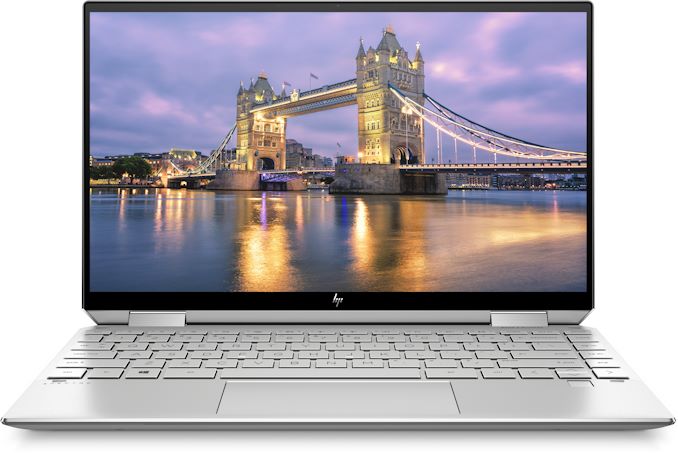
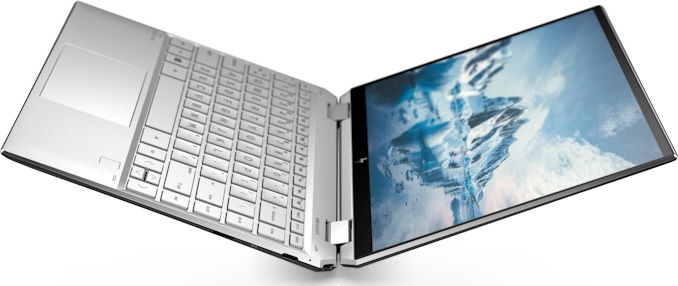
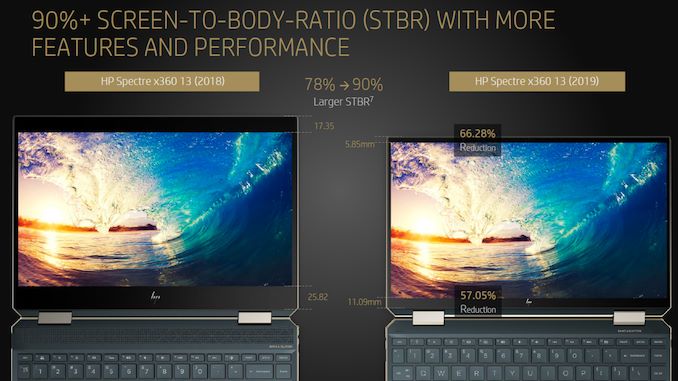
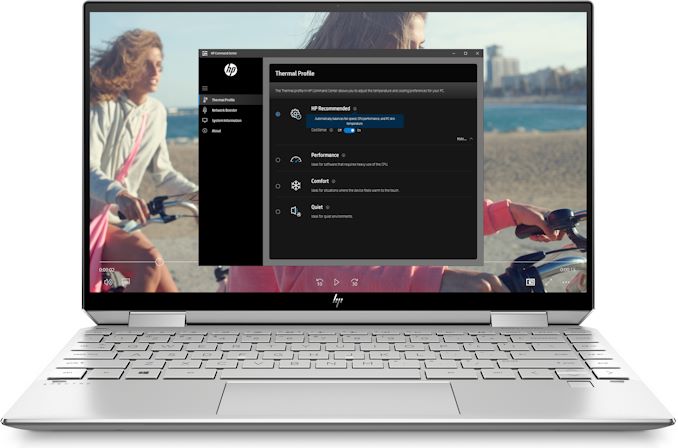
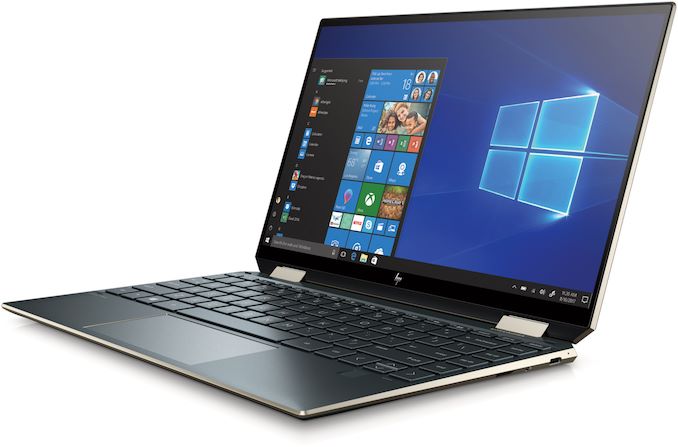
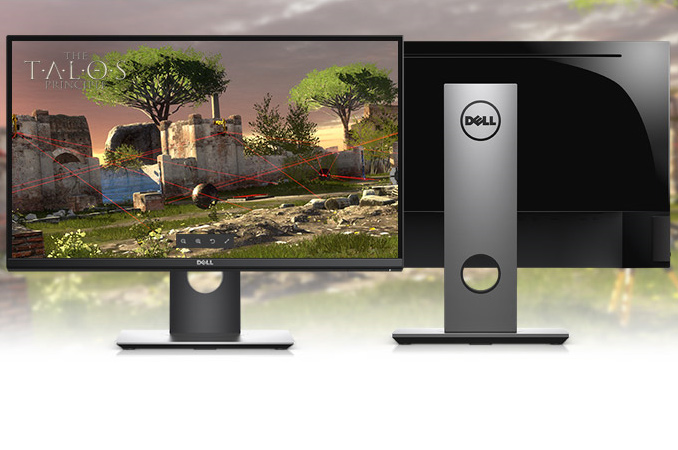
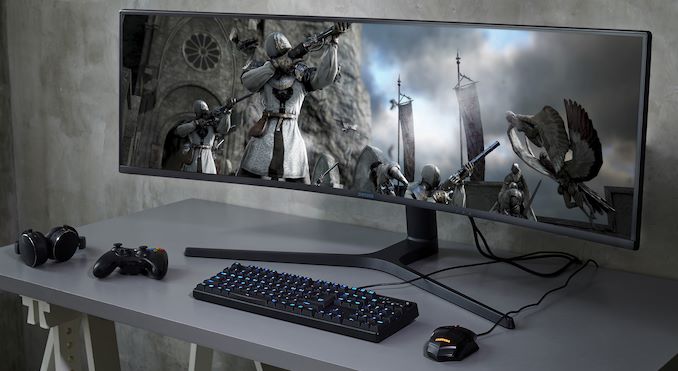

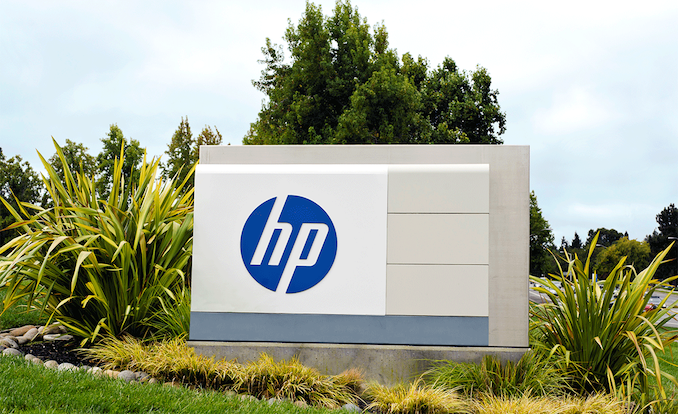
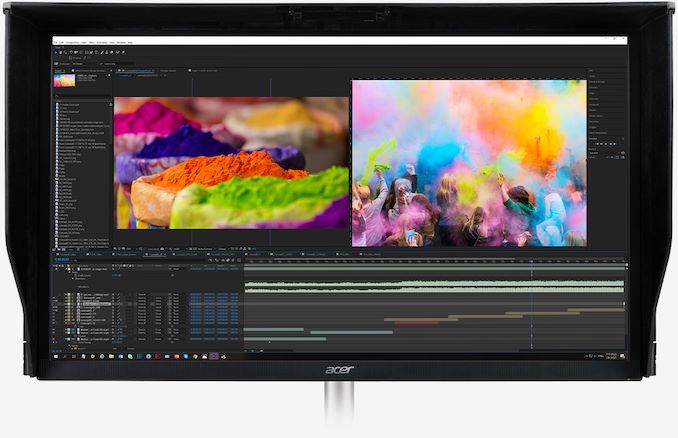
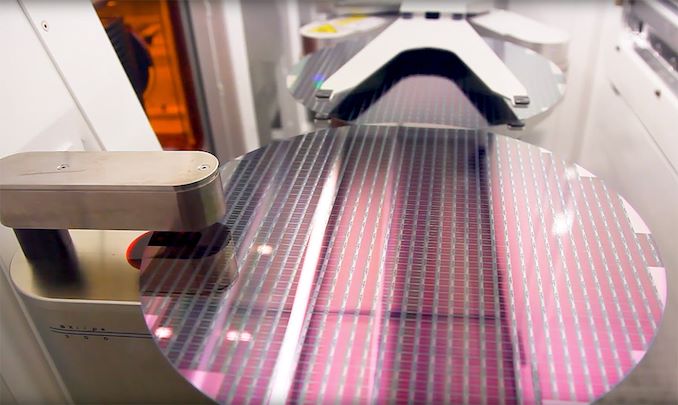
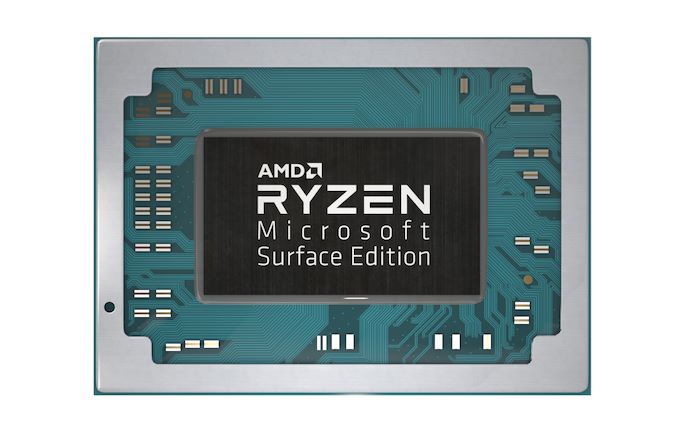
















Bookmarks